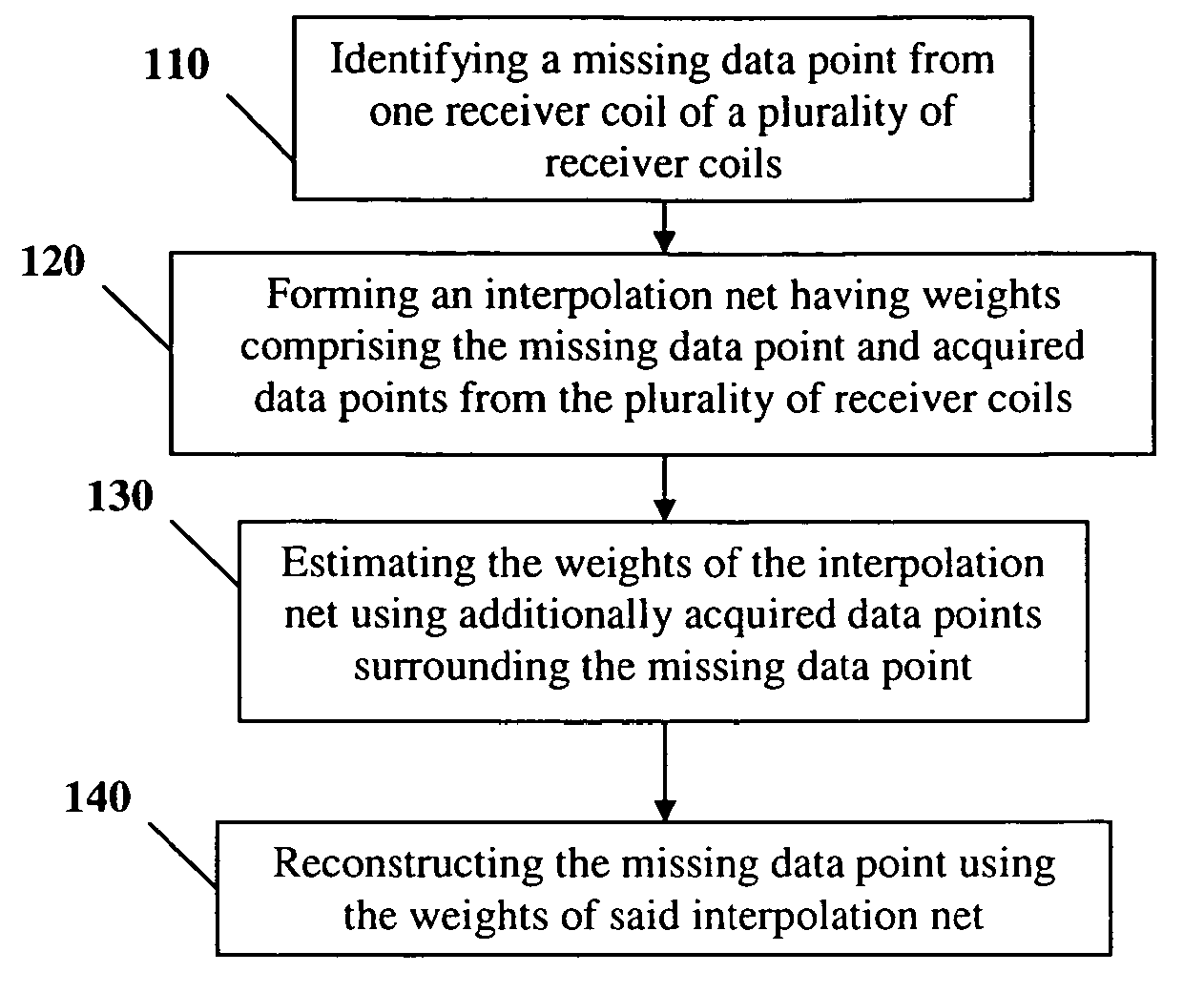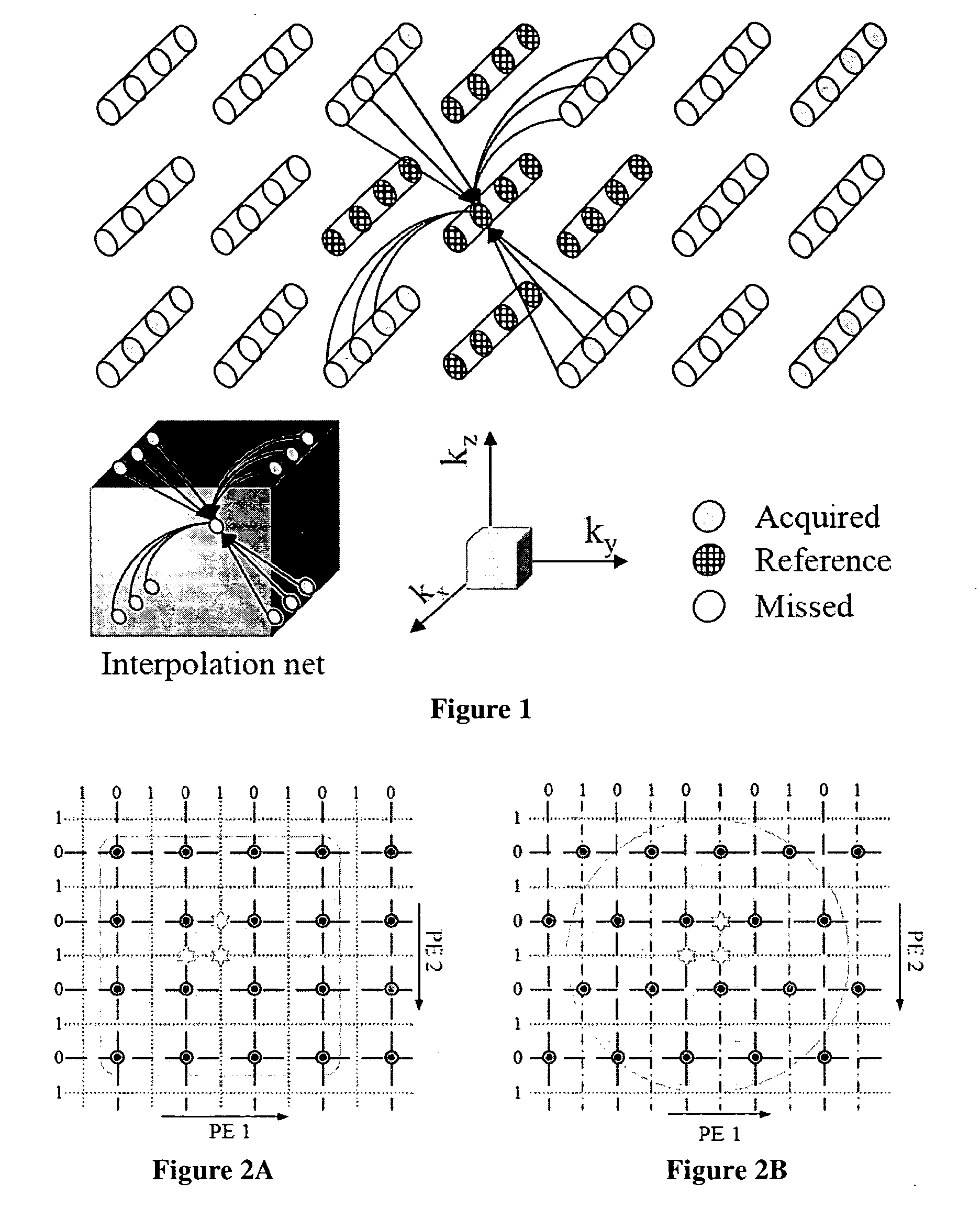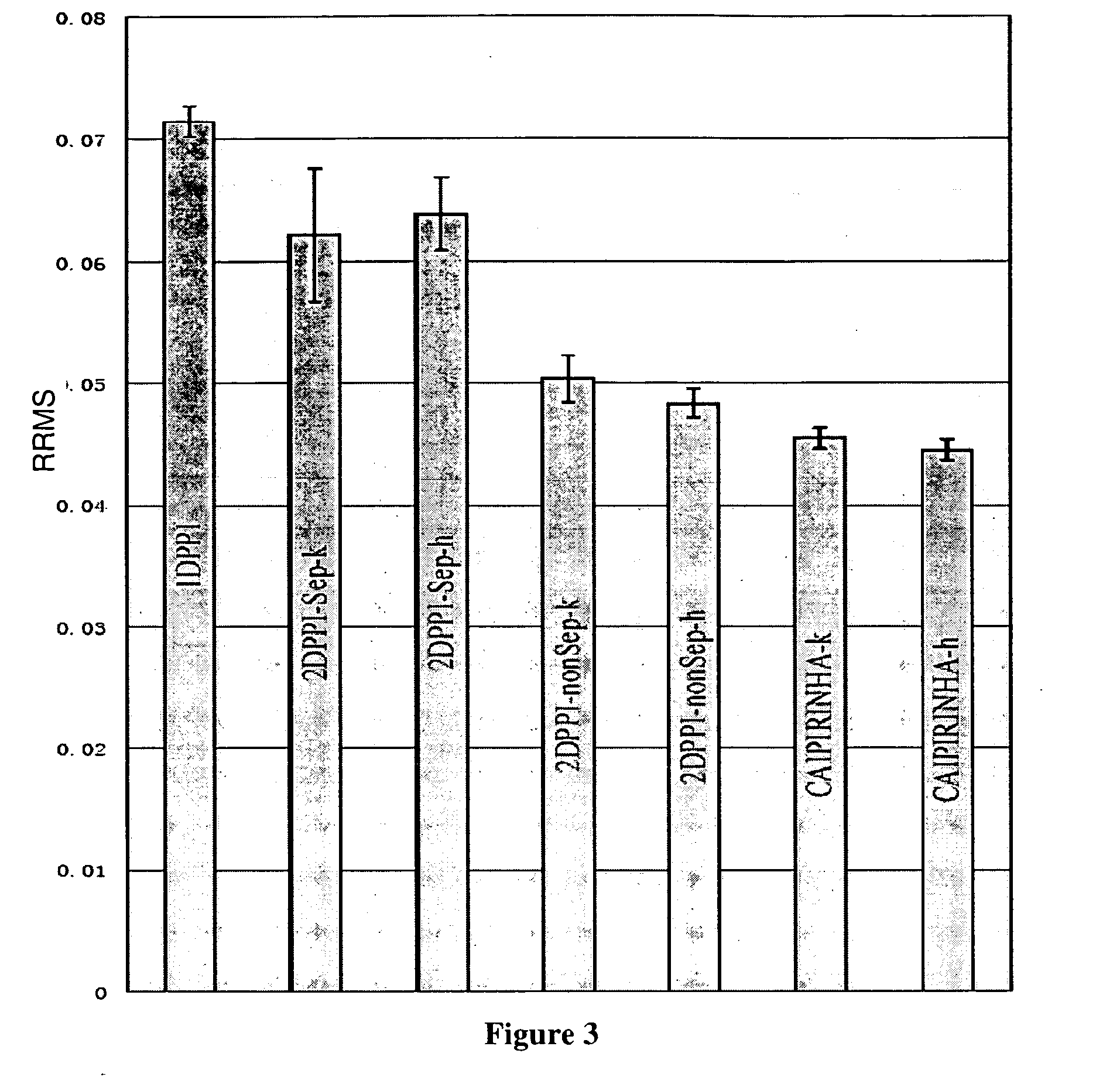2d partially parallel imaging with k-space surrounding neighbors based data reconstruction
a partially parallel, neighbor-based technology, applied in the field of magnetic resonance imaging (mri), can solve the problems of inordinate scanning time for an mri device, inability to tell the spatial origin of the received signal within the body, and imposed hard limit on scanning speed using the method described abov
- Summary
- Abstract
- Description
- Claims
- Application Information
AI Technical Summary
Benefits of technology
Problems solved by technology
Method used
Image
Examples
examples
[0061]3D Cartesian Fourier MRI acquisitions with and without 2D PPI were performed according to an embodiment of the present invention with one subject following written consent on a Siemens Trio 3T whole body MR scanner with a product 8-channel array coil (Siemens, Erlangen, Germany). The two directions which have enough sensitivity variation for applying PPI with this array coil are the anterior-posterior (y) and left-right (x) directions of a subject lying supine in the scanner.
[0062]Four scans with a 3D MPRAGE sequence were performed:[0063]1) Sagittal full-FOV scan with PE along y and x, TR / TE / TI=1620 / 3.88 / 950 ms, matrix readout×PE1×PE2=128×128×60, FOV=250×250×180, flip angle=15°;[0064]2) Axial full-FOV scan with PE along z (the inferior-superior direction, also the B0 field direction) and y, TR / TE / TI=1620 / 3.87 / 950 ms, matrix=128×128×96, FOV=250×250×160, flip angle=15°;[0065]3) In-vivo 2D PPI sagittal scan using the regular 3D Cartesian sampling paradigm (FIG. 2A...
PUM
 Login to View More
Login to View More Abstract
Description
Claims
Application Information
 Login to View More
Login to View More - R&D
- Intellectual Property
- Life Sciences
- Materials
- Tech Scout
- Unparalleled Data Quality
- Higher Quality Content
- 60% Fewer Hallucinations
Browse by: Latest US Patents, China's latest patents, Technical Efficacy Thesaurus, Application Domain, Technology Topic, Popular Technical Reports.
© 2025 PatSnap. All rights reserved.Legal|Privacy policy|Modern Slavery Act Transparency Statement|Sitemap|About US| Contact US: help@patsnap.com



